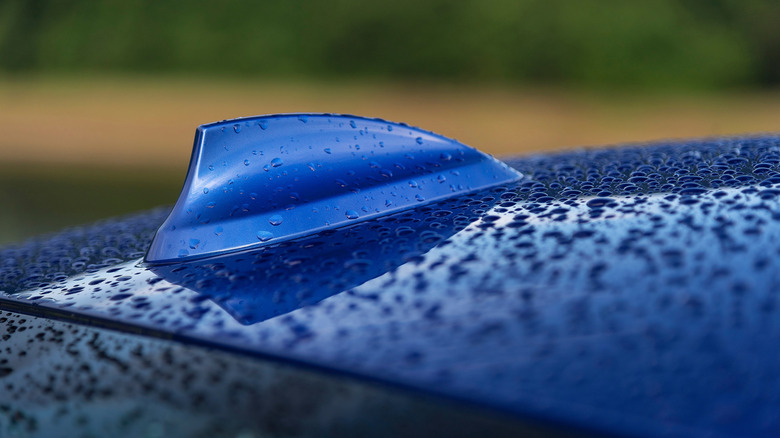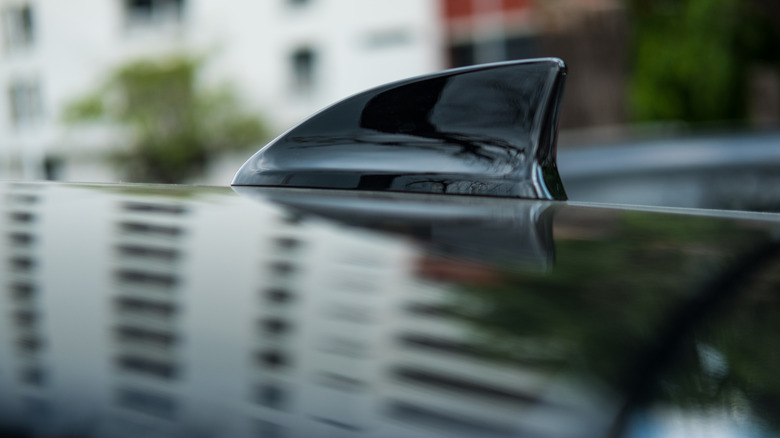The Pros And Cons Of The Shark Fin On Top Of Your Car
Most of the stuff on your car makes immediate sense. Wheels help your car roll, lights help you see, mirrors show what's behind — it's simple. But your car has other little details as well that need a deeper understanding. One of those features is the tiny fin sitting on the roof, usually toward the back. While it does give an aggressive stance to your car, the idea behind putting it on the roof goes way beyond that.
Just as its looks suggest, the tiny piece is called the shark fin antenna. Basically, it's the modern answer to the long, bendy whip antennas that cars used to rock back in the day. And while it might seem small and useless, it quietly handles a surprising amount of tech. It doesn't just help with radio; it also keeps your GPS working, boosts phone signals, supports Wi-Fi, and helps with voice clarity during calls. A small piece that does way more than you would expect.
All the perks of the shark fin antenna
Beyond giving your car a clean, modern look, the shark fin handles a lot of its functionality. It combines several antennas into one neat little shell — radio, LTE, satellite, GPS, and more, all tucked inside that curved bump on the car roof. That means less clutter, no extra wires or rods sticking out, and better overall reliability. Plus, because it's low and aerodynamic, it cuts down wind drag and noise, especially at high speeds.
Durability is another win with a shark fin antenna. Unlike whip antennas that can bend, break, or get caught on branches, the shark fin is sturdy and sealed. Some cars even feature multiple shark fins on the roof. Many models are rated IP67, which means that no dust can enter the device, and they would survive being completely submerged in water. They're designed to withstand most driving conditions and are car wash safe, so you don't need to worry about a spinning brush snapping it clean off. Automakers like Mazda have embraced it as part of their design identity.
But it's not all perfect
Despite all its benefits, the shark fin isn't without a few downsides. For example, AM radio signals might not come through as strongly in more remote areas. That's something some drivers still care about, especially if they rely on AM stations for local news or sports. And if a shark fin ever stops working, replacing it isn't always a plug-and-play task. It might involve digging into the roof or rewiring the whole unit, depending on your car.
Also, personal taste matters a lot. Some people still prefer the look of a traditional antenna, especially on older or sportier cars. The shark fin's slick design doesn't always match every vehicle's vibe. And while cosmetic versions are available for older cars, they only provide the look, not the function. Plus, if you're planning to upgrade or install one yourself, finding the right fit for your car's roof shape and wiring system can be a bit of a hassle.


